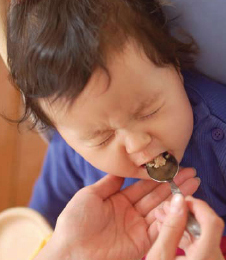There are foods that we like, and those that we avoid at all costs. The food that we avoid may elicit a variety of responses, most prominently, disgust. Despite having such strong dislike towards certain foods, most of the time we have difficulty justifying our dislike.
These negative feelings that we develop towards certain foods begins in childhood. As we age, these feelings can grow very strong, and can last a lifetime. But just how do these unexplained aversions towards such foods develop?
A Matter of Nature. Aversion towards certain foods may be an innate survival mechanism. People generally avoid foods that are perceived to threaten their safety, such as bitter and sour foods. Food allergy may also make children dislike a particular food.
Bad Experience. Almost everyone has at least one food that they will not eat because it made them ill on one occasion. This is a good example of how one bad experience is enough for the person to associate the food with negative outcomes.
Learned Aversion. Between the ages of four and eight years, children learn by watching others, which foods are perceived to be disgusting, and thus, should be avoided. In other words, they are taught to avoid certain foods.
Undesirable Texture. Slimy, gooey, mushy and gelatinous foods are those that are more often perceived as “disgusting”. People generally dislike the way such food feels in their mouth, causing them to shun such food.
Maximise Enjoyment, Minimise Repulsion
Parents can actually get their children to eat just about anything. The key to preventing such aversions to food begins at a young age. Here’s how you can help your children enjoy their food in four simple steps:
- Present Food in a Positive Light. Present food in an attractive and interesting manner. Arrange food in animal shapes or pair new food with something that your child likes. Highlight the fun of food preparation and cooking by involving your child.
- Be a Good Role Model. It all begins with you, the parent. If you have your own reservations about food, keep it to yourself. Instead, enjoy a variety of foods with your children. Children are more likely to accept food when others around them are eating it as well.
- Consistently Offer a Variety. Repeated exposure to an initially disliked food can break down the child’s resistance. You can start off by giving small amounts of the new food and pair it with something your child likes, and slowly increase the amount of the new food as your child slowly accepts it. You can also try different methods of preparing the same food, such as roasting, pureeing or boiling.
- Don’t Pressure Your Child to Eat. Children who are pressured to eat are more likely to dislike the food that is forced onto them. Pressuring children will adversely affect their emotional state and this will lead to negative associations with the presented food.






Comments